About This Guide
We created this guide as a resource to help local leaders like you quickly and comprehensively get up-to-speed on various community concerns, the specific steps to address them, and where to connect locally for assistance.
This guide was first co-authored in August 2022 by numerous community organizations across Simcoe County. These organizations directly support the health, resiliency, and well-being of Simcoe communities. It’s most recently been updated in the summer of 2024.
How to Use This Guide
This guide compiles community issues and input, which is extensive, in accordion format. Each entry includes four sections – an explanation of why the issue is important, significant data, action steps for the municipal level, and direct contact information to local organizations.
Housing Affordability
Why This Matters
The Impact of Housing Costs on Communities
High housing costs significantly affect a community’s economy, residents’ quality of life, and social service demands. As housing costs are the largest share of most household budgets, addressing affordability is a powerful way to reduce poverty, improve health and well-being, and boost local economic resilience.
Housing as a Foundation for Health and Equity
Adequate shelter is fundamental to good health. Inadequate housing and homelessness disproportionately affect vulnerable populations, contributing to increased rates of infections (e.g., COVID-19), chronic diseases, mental illness, and premature death. Poor living conditions also exacerbate stress, leading to unhealthy coping mechanisms, while high housing costs limit access to essentials like food and employment, further undermining health outcomes.
Economic Impacts of Housing Costs
Housing affordability directly influences local labour markets. High housing costs make it difficult to attract and retain employees. In Simcoe County, Barrie, Wasaga Beach, and Collingwood are among Canada’s fastest-growing communities. Barrie has the sixth-highest rental costs in the country, contributing to Simcoe County’s ranking as the second-highest living wage region in Ontario, behind only Halton, Peel, and Toronto.
The Role of Municipalities in Housing Solutions
While housing is primarily a provincial and federal responsibility, municipalities have substantial influence over housing types, locations, amenities, and transportation. Prioritizing equity, affordability, accessibility, and appropriateness for diverse populations is essential. Continuing to focus on low-density, single-detached homes fails to meet the demand for affordable rentals and smaller units. Mixed-income developments are critical to ensuring housing for all income levels.
Planning Tools for Municipalities
Municipalities can leverage planning tools to boost rental housing availability and create compact, complete communities. Denser housing designs reduce infrastructure and maintenance costs, minimize environmental impacts, and preserve farmland by optimizing land use.
Addressing housing affordability is not just a social imperative—it’s an economic and environmental one that builds stronger, healthier communities.
Did You Know…?
- 49% (or 18,847) of tenant households spent more than 30% of their total before-tax household income on shelter costs.
- According to the Barrie and District Association of Realtors, as of June 2024, the average sale price across Simcoe County is now $861,188.
- According to Canadian Mortgage and Housing Corporation, the Barrie area has an average pre-tax household income of just over $96,000 which according to the CMHC affordability calculator would only qualify a household for a home that is $150,000 or less.
- As of June 2023, recent job reports show 9,612 postings, 6,281 of which are new in Simcoe County. The President of the Barrie Chamber of Commerce attributes much of this problem to high housing costs.
What You Can Do As a Municipal Leader
- Tax and/or fine developers who purchase land in areas identified for intensification and do not develop it within a set amount of time.
- Tax and/or fine developers who have developments approved but do not meet set progress milestones.
- Implement Community Improvement Programs (CIP) to refund development charges for developments that include affordable housing units. In municipalities where this exists, such as Barrie, increase the funding to this program.
- Review Barrie’s Housing Affordability Task Force report for further ideas.
- In the predominantly low-rise suburban context, diversifying the housing supply means adding more gentle or ‘discrete’ density that can blend into suburban neighbourhoods, including the ‘Missing Middle’, which are neither single-family homes nor towers. These housing types include secondary units, townhouses, medium-sized multiplexes, stacked fourplexes, side-by-side and stacked duplexes, and stacked triplexes, among others.
- Communicating with the local neighbourhood is essential to achieve greater, more affordable housing diversity because NIMBY (Not In My Backyard) related opposition is such a problem. Elected officials should see it as their job to promote the benefits of density and affordable housing in its many forms.
- Pursue funding for and adopt policies and regulations to encourage purpose-built rental units, accessible units, smaller units within low-density neighbourhoods, and family-sized units within mid-rise buildings.
- Celebrate wins and the people who need this housing.
- Access municipal planning tools such as https://fcm.ca/en.
Local Organizations With Expertise
Redwood Park Communities
Email: jennifer@redwoodparkcommunities.com
Website: https://redwoodparkcommunities.com/
CONTACT Community Services
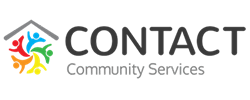
Simcoe County Greenbelt Coalition
Email: margaret@simcoecountygreenbelt.ca
Website: https://simcoecountygreenbelt.ca/
Social Housing
Why This Matters
Housing has been recognized as a human right since the 1948 UN Declaration of Human Rights and reaffirmed in Canada’s National Housing Strategy Act (2019). All levels of government share the responsibility to prioritize those most in need in realizing the right to adequate housing, regardless of their acknowledgement of this right.
While market housing can address affordability for some, non-market housing (e.g., government-subsidized or run housing) is essential for very low-income households. Additionally, supported housing is critical for families struggling to maintain stable housing.
A safe, affordable home benefits the entire community. However, in Simcoe County, the average wait time for social housing is currently 7 years, highlighting an urgent need for action.
Did You Know…?
- In the January 2022 Simcoe County Homeless Enumeration, 722 people were counted as unhoused. This is the highest count since Simcoe County began enumerations in 2016.
- 71% of those counted were single adults, compared to approximately 18% in the general population of Simcoe County. Most of them are on Ontario Works or the Ontario Disability Support Program, providing $390-497 each month for housing. The market does not create housing for this population. 70% are chronically homeless, indicating they may need wraparound support to recover from homelessness and stay sustainably housed.
- Increasingly, working families with incomes above the poverty line are becoming homeless, because they are unable to find an affordable place to rent or buy, as home costs have increased at a significantly higher rate than salaries:
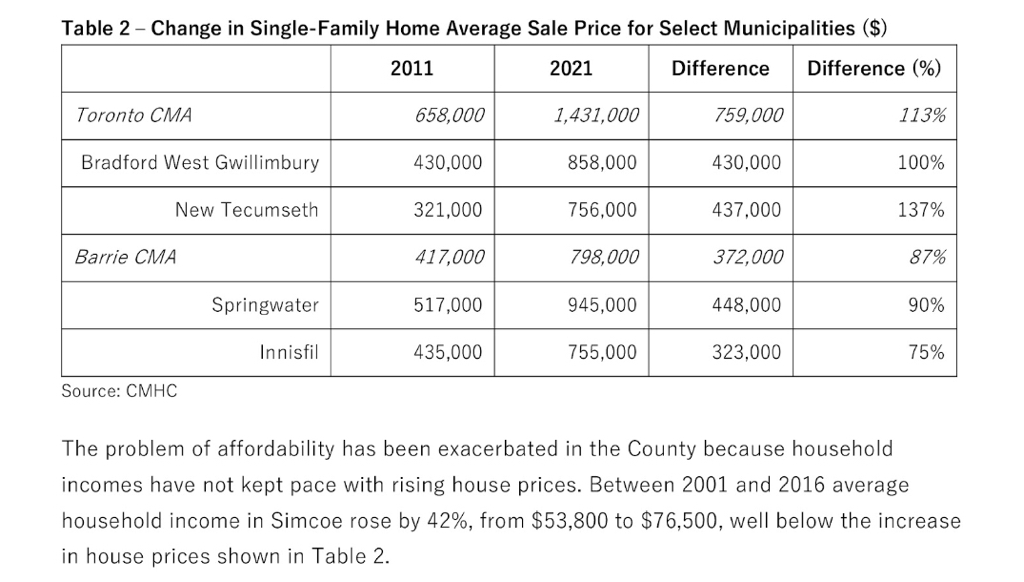
What You Can Do As a Municipal Leader
- Support the ongoing partnership and participation of nonprofits in the housing market, including the acquisition of multi-unit residential buildings by nonprofits.
- At the County level, increase rent supplements, and rent-geared-to-income units, and review the Housing Retention Fund with input from those who have used the fund and those who have been denied, to ensure it is working as it should.
- Increase collaboration and investment in transitional and supportive housing for people at risk of or experiencing homelessness.
- Increase investment in the repair and renewal of naturally occurring existing affordable housing.
Local Organizations With Expertise
Redwood Park Communities
Email: jennifer@redwoodparkcommunities.com
Website: https://redwoodparkcommunities.com/

Reducing Poverty
Why This Matters
Poverty exists in every municipality across Simcoe County, exacerbated by rising shelter, food, and energy costs. Income inequality is a key driver: in Simcoe Muskoka, with 21% of all income going to the wealthiest 10%, and only 3% goes to the poorest 10%.
This disparity hinders future economic opportunity, by undermining childhood development, including educational outcomes, reduces overall health outcomes, and increases mental health challenges. These factors represent opportunity costs to our economy, while also increasing costs associated with social and health services.
Currently, one in eight households faces food insecurity, and many working poor cannot afford basic living standards. Poverty leads to higher rates of diabetes, heart disease, and lower life expectancy, straining communities and social services.
Evidence consistently shows that reducing poverty through meaningful, sustained action is both more humane and more cost-effective than ignoring the problem or offering superficial solutions.
Did You Know…?
- While the minimum wage will increase from $16.55/hr to $17.20/hr in October 2024, the living wage—what people need to afford basic needs—is $23.05 for Simcoe County. This means someone working for minimum wage is almost $3 short every hour to afford essentials like food, shelter, transportation, clothing, child care, medical expenses, and recreation.
- 12% of the Simcoe Muskoka population (or about 61,100 people) are living with low incomes. The rate varies by age group with:
- 15% (15,860) of children (under 18 years) living in low income.
- 11% (35,985) of adults (between 18 and 64 years) living in low income.
- 10% (9,270) of seniors (65 years and over) living in low income.
- Some groups living in low income are over-represented with:
- 32% (7,030) of lone-parent families living in low income.
- 20% (6,445) of the population ages 25 to 64 years who have not completed high school or beyond living in low income.
- 20% (780) of recent immigrants (who immigrated to Canada between 2006 and 2011) living in low income.
- 19% (3,310) of Indigenous identity population living in low income.
- 15% (16,885) of the population with activity limitations/difficulties living in low income.
What You Can Do As a Municipal Leader
- Develop a local poverty reduction task force and work closely with the Simcoe County Poverty Reduction Task Group to address systemic issues that cause poverty.
- Implement local policies that address affordable housing, early childhood development, education and skills development, transit, social infrastructure and income security.
- Lead by example for other employers in the area to pay a living wage
Local Organizations With Expertise

Household Food Insecurity
Why This Matters
Household food insecurity occurs when individuals or families lack the financial resources to purchase food. It can affect anyone experiencing a financial crisis, putting them at higher risk. For example, those living on low incomes are often in a chronic state of financial crisis, struggling to pay rent, and bills, and buy food. A financial crisis can also happen to working individuals and families, such as during a sudden job loss, which impacted many during the pandemic. In such cases, food is often sacrificed to cover other living expenses.
When someone is experiencing food insecurity, they are likely struggling with other basic needs too. This can include inadequate or insecure housing, lack of money for necessities such as prescription medications, dental care, telephone service, transportation, and clothing, as well as dealing with depression, anxiety, and social isolation.
When a family or individual struggles to put food on the table, it is a sign of overall deprivation due to inadequate or unstable incomes. Many people associate food insecurity with unemployment, but over 60% of households, or three in five families struggling with food security, have employment income.
Food charities, such as food banks and soup kitchens, provide temporary food relief for people who cannot afford to buy their own. Despite enormous efforts, food charity can never meet the growing demand, which is worsening with skyrocketing inflation.
Food banks and other charity programs do not solve household food insecurity. When the charitable food is gone, household food insecurity remains because there still isn’t enough money to buy food. Only about 20% of households, or one in five families experiencing food insecurity, use food banks. Those who don’t may sell possessions, delay paying rent or other bills, or eat less—or not at all.
According to the United Nations Human Rights Council, all humans have the right to adequate food in socially dignified ways. In a country as rich as Canada, everyone should be able to buy enough food. Solving food insecurity requires more than just food; income solutions are needed to address this urgent public health problem.
Did You Know…?
- 1 in 8 Simcoe Muskoka households are food insecure
- 1 in 6 children and youth in Simcoe Muskoka are food insecure.
- People who experience food insecurity have poorer physical and mental health and are less able to participate in their community.
- The most food insecure individuals can cost the health care system up to 121% more money (up to $4000 annually) compared to those who are not food insecure ($1600 annually).
- Only 1 out of 5 food insecure people will visit a food bank locally.1Source: SMDHU
What You Can Do As a Municipal Leader
- Annually review the prevalence and severity of poverty and household food insecurity, understand its impacts on community members and the community, and use this information to take municipal action
- Advocate the provincial and federal governments for income policies and programs that can reduce household food insecurity, like shifting existing provincial income support programs toward basic income principles that require less conditionality while providing a livable income with more autonomy.
- Work with local coalitions that are working to reduce household food insecurity and support those most vulnerable.
- Facilitate local-level initiatives that increase economic resilience for individuals/families with very low incomes and groups experiencing systemic racism, like supporting local Community Volunteer Income Tax Programs (CVITPs) through the Canada Revenue Agency.
- Lead by example by implementing a living-wage policy for municipal employees and contractors, and earn certification through the Ontario Living Wage Network.
- Promote and encourage Living Wage Employers within the municipality by:
- Leading education campaigns in partnership with the local Chamber of Commerce and Poverty Reduction Task Group.
- Showcase Living Wage employers through campaigns similar to Communities in Bloom.
- Enhance policy and program support for employment, training, entrepreneurship, and economic development.
- Offer subsidized transit and support alternative transportation strategies in municipalities that do not have the needed infrastructure to ensure everyone has access to food.
Local Organizations With Expertise

Simcoe County Food Council
Email: foodcouncilcoordinator@gmail.com
Website: https://www.scfoodcouncil.com/
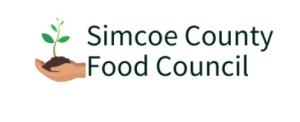
Supporting Local Agriculture & Community Food Access
Why This Matters
Food security exists when all community residents have access to a safe, culturally appropriate, and nutritionally adequate diet through a sustainable food system that prioritizes community self-reliance and social justice.
Household food insecurity is one aspect of food security, focusing on individual or family access to food. Another key element is community food access, which includes initiatives like food charity programs, farmers’ markets, community gardens, and rooftop gardens. These programs enhance local food availability, foster sustainability, and build resilience within the community.
Did You Know…?
- Ontario is losing 319 acres of farmland every day.
- In the last 35 years, Ontario has lost 2.8 million acres of farmland to non-farm uses like urbanization and aggregate mining.
- There are over 2000 operating farms across the County of Simcoe. The agricultural sector plays an important part in our local economies.
What You Can Do As a Municipal Leader
To increase community food security:
- Support and increase funding for Farmer’s Markets.
- Create and invest in community food programs such as community gardens, rooftop gardens, edible landscapes, incubator kitchens and farms.
- Protect existing farmland from urbanization.
- Provide a letter of support for the creation of the Recreation, Research, and Education Farm at Lakehead University Orillia.
- Create an Urban Agriculture Strategy within the municipality to preserve existing public land and enhance the community’s urban-scale food production.
- Strengthen municipal community food security by ensuring agriculture and food are part of Official Plans and Community Improvement Plans.
- Support local school food literacy programs through financial donations and shared infrastructure and resources.
- Provide food literacy programming through municipal facilities and integrate food programming into recreation departments.
- Support libraries to be leaders in food literacy initiatives in your municipality in partnership with community food champions.
To support local agriculture:
- Ease municipal building codes that limit on-farm housing to allow more housing options for farm workers which could include micro-units and tiny homes.
- Pass a by-law to classify farm gate sales locations or buildings as agricultural, not commercial, for property taxation.
- Create a Municipal Food and Agriculture Committee to use a “systems thinking” approach, and apply a food lens to municipal work to address the complexity of food access and urban agriculture through leveraging community food assets.
- Ensure agriculture representation exists in municipal governance to provide input and feedback in decision-making.
- Increase your municipality’s intensification target to ensure less farmland is lost to sprawl.
- Review policies that create unintended barriers for local food initiatives like community gardens and farmers’ markets.
- Remove barriers and streamline navigation through the agricultural development process and land improvement (i.e., tile draining, and farm buildings).
- Strengthen agritourism by promoting on-farm value-added initiatives and showcasing local food.2Tourism Simcoe County3Always in Season
Local Organizations With Expertise
Simcoe County Food Council
Email: foodcouncilcoordinator@gmail.com
Website: https://www.scfoodcouncil.com/

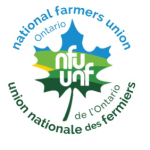
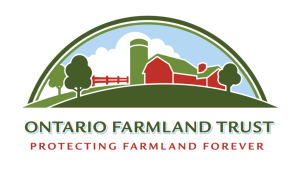
Building 15-Minute Communities
Why This Matters
Fifteen-minute communities are places where people can meet their daily needs within a 15-minute walk from their homes. For areas that are more remote or rural, this may be more difficult to implement, but the underlying principles apply to every community regardless of size or location.
The opposite of a fifteen-minute community is sprawl, which is highly car-dependent, more expensive to live in, costlier for municipalities to service and maintain, and has high per capita greenhouse gas emissions, mainly due to heating and transportation.
With rising inequity, increased housing costs, and a changing climate, it is crucial to design complete communities that are compact, more resilient, less expensive to service, and more affordable.
Building fifteen-minute communities and rejecting sprawl helps address other pressing issues, such as reducing living costs, creating healthier and greener communities, decreasing inequity, and improving municipal finances through wiser infrastructure investments and lower servicing costs. The first step is to support more infill and gentle density, and to oppose sprawl.
Did You Know…?
- Hemson Consulting found that infill pays for itself and adds $606 per person/year to municipal coffers, while low-density single detached housing on greenfield costs the municipality $465 per person/year over and above what is received in development charges and new tax revenue.
- Transitioning to more compact, resource-efficient communities could reduce a community’s GHG emissions by 36-54%.
- Introducing gentle density to existing settlement areas is a key way to make housing more affordable.
- Learn more about 15-Minute communities, including rebuttals to comment conspiracy theories about it, here.
What You Can Do As a Municipal Leader
- Set a vision for your municipality to shift from more settlement boundary expansions and sprawl, toward more housing within existing built-up areas. Ensure this vision is reflected in policy statements in official plans and other municipal planning and policy documents.
- Collect data and resident input about the absence or presence of amenities they need to meet their daily needs (grocery stores, child care, housing, pharmacy, businesses, public spaces, green spaces, active transportation infrastructure etc.). Ensure these amenities are accessible to all neighbourhoods, especially lower-income neighbourhoods.
- Re-think infrastructure investments to provide residents with more transportation choices beyond their cars (e.g. protected bike lanes, walking paths, frequent transit).
- Remove local zoning barriers to building gentle density and infill. Refer to resources that outline barriers for micro-units and “missing middle”.
Local Organizations With Expertise
Simcoe County Food Council
Email: foodcouncilcoordinator@gmail.com
Website: https://www.scfoodcouncil.com/



Equitable, Safe Communities
Why This Matters
Communities across the country are integrating smart growth, environmental justice, and equitable development approaches to design and build healthy, sustainable, and inclusive neighbourhoods. However, ensuring a safe community for all requires intentional policy and community engagement, especially with those who are most disenfranchised.
A safe and equitable community is one where harms to residents, including self-harm, are prevented whenever possible. It also focuses on reducing and healing harms that cannot be prevented as effectively as possible.
Safety and well-being are interlinked at a systems level, as is safety with community connection. The more a community is connected and accessible to all residents, the safer and healthier it is.
Did You Know…?
- According to the Simcoe Muskoka District Health Unit, in the 19 months of available data since the start of the COVID-19 pandemic (March 2020 to September 2021) there were 245 opioid-related deaths in Simcoe Muskoka.
- That is nearly 70 percent higher than the 145 opioid-related deaths in the 19 months before the start of the pandemic (August 2018 to February 2020).
What You Can Do As a Municipal Leader
- Form a Drug and Harm Reduction Strategy/Committee.
- Enable low-income households to participate in our increasingly digital world by providing free WiFi in municipal facilities, expanding access to a host of social services, employment and education opportunities.
- Consult with residents, especially those who are disenfranchised to find out what they need to address underlying systemic issues of poverty, racism, stigma and discrimination.
- Work with disenfranchised individuals and community partners to address systemic issues of poverty, racism, stigma and discrimination and increase investment in initiatives to address these issues, including anti-hate and anti-racism initiatives.
- Set timelines and budgets to progressively work toward 24/7/365 public washroom and drinking water access.
- Develop rights-based homelessness encampment strategies that do not use municipal bylaws to criminalize poverty and homelessness.
Local Organizations With Expertise

Protecting Lake Simcoe
Why This Matters
Lake Simcoe’s health is threatened by current and planned development in the watershed basin. The nutrient phosphorus contributes to algae and weed growth. When these die, the decomposition process consumes oxygen in the water. This affects our prized cold-water fish, like lake trout and whitefish, and in turn, our $420 million per year sustainable recreation sector. Cutting phosphorus loads in half, as targeted in the Lake Simcoe Protection Act and Plan, is essential for maintaining lake health. Water quality is also impacted by warmer waters due to climate change, invasive species, and increasing road salt.
There has been no new coordination between municipalities, regional governments, and the province on water and wastewater servicing capacity around Lake Simcoe since 2011. Municipalities must advocate to the province to maintain environmental limits, oversee and coordinate efforts, and ensure compliance at Lake Simcoe.
Did You Know…?
- The natural cover target for the Lake Simcoe watershed is 40%. Today, only 21% of the watershed is covered by forests and wetlands that are well protected by provincial policy. Some of these areas are threatened by highway development pushed by the government of Ontario: the Bradford Bypass.
- Nearly 60% of the watershed is in natural cover, so we could protect enough if there’s a will to do so. See here for more information about environmental policy mapping and natural heritage protection.
- Phosphorus comes from many sources and is not easy to control:
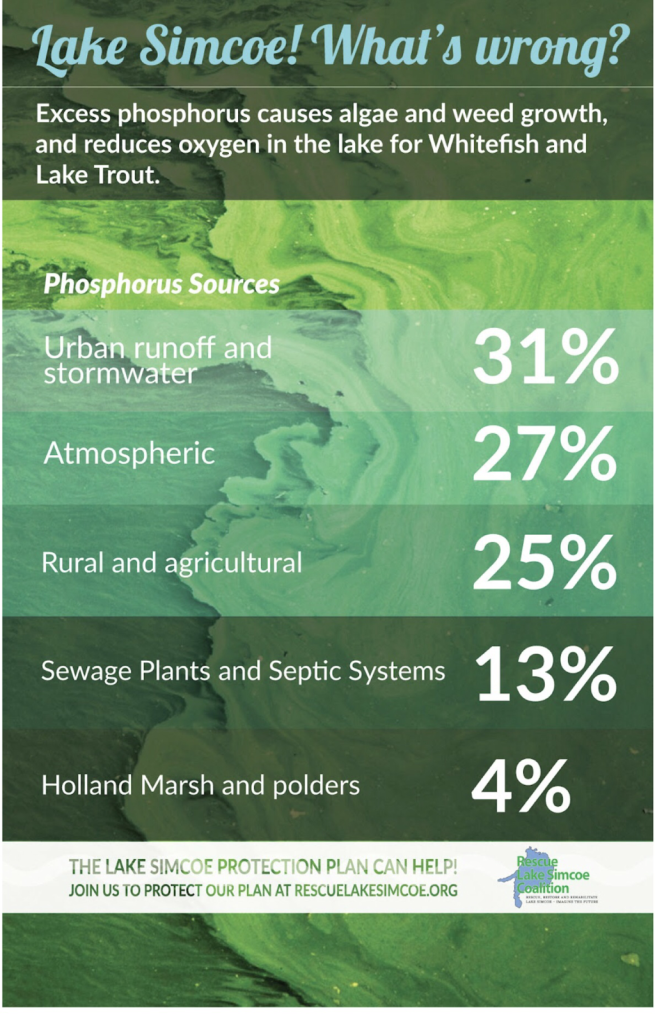
What You Can Do As a Municipal Leader
Municipal advocates for Lake Simcoe have and can continue to effect change and spur responsible development and rehabilitation by communicating with the province in coordination with other watershed municipalities. The Rescue Lake Simcoe Coalition has and will continue to launch initiatives with this aim.
In the near term we need municipalities to ask the province to:
- Evaluate the impacts to Lake Simcoe of their planned doubling of the watershed population. It’s not just about sewage. Overland, stormwater, road building, salt impacts and reduction of natural heritage all chip away at the lake’s health.
- Stop the Bradford Bypass in its current location at least, and stop the Upper York Sewage “Solution” entirely.
- Municipalities should put money in the capital budget for improving stormwater control and maintenance, water infiltration over conveyance, and increased shading of streams and shorelines.
Local Organizations With Expertise
Rescue Lake Simcoe Coalition
Email: rescuelakesimcoecoalition@gmail.com
Website: https://rescuelakesimcoe.org/
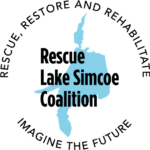
Simcoe County Greenbelt Coalition
Email: margaret@simcoecountygreenbelt.ca
Website: https://simcoecountygreenbelt.ca/

Protecting Groundwater
Why This Matters
What you may not know is that groundwater is essentially a finite resource. A study by the University of British Columbia found that 94% of the world’s groundwater takes longer than 50 years to replenish. While Simcoe County is blessed with clean groundwater, our growth demands, aggregate extraction, and climate changes are threatening our water.
Within Simcoe County, most residents rely on groundwater for their daily needs. This is a highly vulnerable position, especially as droughts and heat waves continue to increase in frequency and intensity due to a changing climate.
Groundwater is not just the result of buried water reserves. It comes from an interconnected system of land and water features. To maintain groundwater levels, we must ensure that the components that replenish (recharge areas), clean (wetlands, forests), and store (aquifers, moraines) our water are healthy and functioning well. Therefore, how we use the land directly impacts the water below and in surrounding areas.
Did You Know…?
- Over 30% of residents in Simcoe County, or approximately one in three people, rely on private wells for their daily needs. These wells are not protected by the Clean Water Act or Source Water Protection Plans.
- Climate analysis by the Source Water Protection Committees in the region predicts that shallow (private) wells and municipal wells could go dry. Alternate sources of water may need to be found due to increased droughts and changes in precipitation patterns.
What You Can Do As a Municipal Leader
- Support the creation of a ‘blue belt’ that would permanently protect areas of hydrological significance (moraines, wetlands, recharge areas, aquifers) from any site alteration
- Prohibit water taking for water bottling in your municipality.
- Advocate for private wells to be included in Source Water Protection Plans
- Advocate at the provincial level for municipalities to have the power to deny aggregate applications that dig below the water table.
Local Organizations With Expertise
Reform Gravel Mining Coalition
Email: campaign@reformgravelmining.ca
Website: https://www.reformgravelmining.ca/
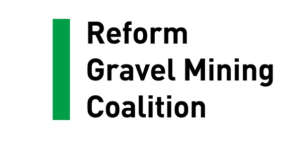
Simcoe County Greenbelt Coalition
Email: margaret@simcoecountygreenbelt.ca
Website: https://simcoecountygreenbelt.ca/

Aggregate
Why This Matters
Simcoe County is one of the largest aggregate producers by volume in Ontario. Aggregate operations often conflict with other land uses, including agriculture and nearby residential areas. While there is a need for aggregate, the province approves thirteen times more than what is annually consumed.
Gravel mining is not a benign activity. It destroys the natural environment and permanently alters communities. Gravel is a finite resource that, while still in the ground, supports productive farmland, groundwater filtration, flood mitigation, and other natural services. Gravel companies are not required to show that new sources of gravel mining are necessary. This has led to an oversupply of gravel permits as companies speculate on land for future use.
We must also recognize that with a changing climate, reducing emissions is essential. Most aggregates are used to manufacture cement and construct buildings, roads, bridges, sewers, and other infrastructure. The cement industry produces 8% of global carbon emissions. If it were a country, it would be the third-largest global emitter of CO2.
Did You Know…?
- Simcoe County annually produces over 11.5 million tonnes of aggregate, on average.
- There are over 100 licensed pits and quarries within Simcoe County, with a total licensed area of almost 10,000 acres.
- Based on estimates from the Ontario Geological Survey (2103), combining licensed and unlicensed areas, with over 85,000 acres of land could be dedicated to aggregate extraction in Simcoe County.
- Provincial water-taking permits allow aggregate to extract up to 4.6 billion litres per day
- An estimated 5,000 acres of farmland per year are lost to aggregate activity in Ontario.
What You Can Do As a Municipal Leader
- Have your municipality pass a resolution to support a moratorium on new gravel mining approvals in Ontario. This pause on new approvals will allow time to consult on much-needed policies such as prioritizing the use of recycled aggregate, policies that honour Indigenous treaty rights and setting appropriate levies that reflect the full social and environmental costs of aggregate mining.
- Advocate to the province to ensure municipalities have a strong say in where aggregate can be located within a municipality, the levies they are charged and how they are distributed and transparency about aggregate need and production.
- Learn from local citizen groups directly affected by aggregate activity to understand how your residents are impacted and how local government can help.
- Become a municipal leader in using recycled aggregates and asphalt.
Local Organizations With Expertise
Reform Gravel Mining Coalition
Email: campaign@reformgravelmining.ca
Website: https://www.reformgravelmining.ca/

Simcoe County Greenbelt Coalition
Email: margaret@simcoecountygreenbelt.ca
Website: https://simcoecountygreenbelt.ca/

Climate Action
Why This Matters
Climate action isn’t just the responsibility of federal governments and international bodies. According to the Federation of Canadian Municipalities, 50% of Canada’s greenhouse gas emissions are directly linked to municipal decisions. This is mainly due to choices in land use, transportation planning, and building standards that affect individual behaviours. For example, a municipality that approves car-dependent sprawl forces people to drive to get everything they need, increasing carbon emissions. A municipality that invests heavily in roads and parking lots removes green spaces and the carbon sequestration services those trees and wetlands provide, increasing the community’s carbon footprint. So as you can see, climate action isn’t relegated to one type of action or one area of a municipality—it bleeds into everything, especially land use and transportation planning.
A strong climate action plan focuses on mitigation and adaptation. A strong climate plan determines a way to make their community more transportation and energy-resilient. A strong climate action plan considers the people who will be most affected by the impacts (e.g. women, youth, seniors, low income) and creates strategies to lessen those impacts.
This is where climate action plans intersect with housing, poverty reduction, food security, and health advocacy. Climate action is a co-benefit to many other issues communities face, so a strong climate action plan considers the broader impacts of climate change.
The truth is that climate change will involve increasingly expensive infrastructure failures, servicing costs, and lost lives (both human and natural). There is no way for any municipality to avoid this cost, but action today can reduce the costs and give your citizens hope for a better tomorrow.
Did You Know…?
- According to the Simcoe Muskoka District Health Unit, Simcoe Muskoka will have a climate similar to:
- Ohio by 2030
- Kentucky by 2050
- Mississippi by 2080
- Every dollar spent on climate adaption saves $3-5 in recovery and repair costs.
- Our region will not be free of climate impacts.
- According to a new report released by The U.N.’s Intergovernmental Panel on Climate Change, which has the world’s leading climate scientists, curbing global heating to 1.5 degrees Celsius above pre-industrial levels would require greenhouse gas emissions to peak before 2025 at the latest.
- At the same time, methane, a potent greenhouse gas, would also need to be reduced by roughly one-third.
What You Can Do As a Municipal Leader
- Inform yourself about climate change and its local impacts. You can review a summary chart of local impacts expected as well as a FAQ if you are just starting to learn about climate change. Review the temperature charts for the area.
- Ensure all local decisions are passed through a climate lens similar to how staff reports consider the financial implications of a decision. Does this increase carbon emissions or reduce them? Will this remove or add land that sequesters carbon, prevents flooding and reduces air temperature?
- Establish a Climate Action Citizen Advisory Committee to help your municipality prepare for and mitigate a changing climate
- Allocate funds in your municipal budget for climate mitigation and adaptation
- Set a vision for your municipality that is energy, food, transportation and housing resilient.
- Ground your municipality’s climate action vision in policy statements in official plans and other municipal planning and policy documents by incorporating policy statements such: “Opportunities shall be provided to use or develop renewable energy sources through design regulations and land use and zoning requirements” and “natural and/or naturalized landscapes are encouraged to improve air and water quality throughout the community, support outdoor physical activity and encourage connection with nature”.
Local Organizations With Expertise

Wasaga Beach Climate Action Team
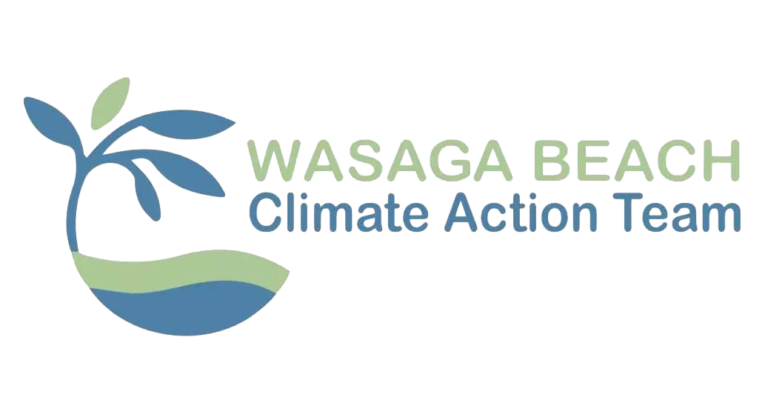
New Tecumseth Climate Action
Email: NewTechClimate@gmail.com
Website: https://www.facebook.com/New-Tec-Climate-109709457171528

Collingwood Climate Action Team
Email: ccatcommengage@gmail.com
Website: https://collingwoodclimateaction.com
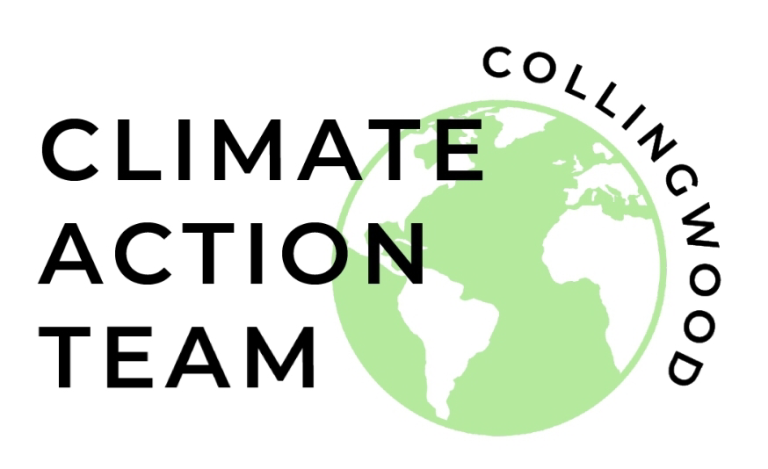
Simcoe County Greenbelt Coalition
Email: margaret@simcoecountygreenbelt.ca
Website: https://simcoecountygreenbelt.ca/

Protecting and Expanding Natural Heritage
Why This Matters
Natural heritage features include forests, streams, wetlands, and regenerating fields (and their interconnections) that support key ecological services such as water provision, purification, air quality improvement, carbon storage, temperature reduction, pollination, and flood prevention.
Simcoe County is blessed with a rich natural heritage, including vast interconnected water systems with provincially and internationally important resources: Wasaga Beach, Minesing Wetlands, Matchedash Bay, and Wye Marsh. Simcoe County is home to over 1,500 species of vascular plants, 150 species of nesting birds, 50 mammals, and 33 types of reptiles and amphibians. It offers specialized vegetation communities adapted to unique habitats such as coastal plains, prairies, savannas, alvars, bogs, fens, the Great Lakes shoreline, and the Niagara Escarpment.
Additionally, the county contains provincially significant wetlands, areas of natural and scientific interest, and more than 60 species of plants and animals deemed vulnerable, threatened, or endangered in Ontario and/or Canada. Extensive tracts of undisturbed forest in the north and east provide habitats for forest-dwelling birds and mammals. All these features combine to offer a healthy habitat for Simcoe County’s residents, flora, and fauna.
Maintaining and protecting a connected, healthy, and robust natural heritage system has significant benefits for local communities socially, financially, and environmentally.
Did You Know…?
- Lake Simcoe’s key natural heritage systems provide ecosystem services valued at $922.7 million per year. This includes benefits to the economy, flood prevention, water supply, pollination, and carbon sequestration.
- Living in and near nature has cognitive and psychological benefits for both children and adults, including lower depression rates, improved cognitive development in children, boosted happiness levels, and increased physical health.
- Ontario lost 72% of its pre-settlement wetlands by 2002.
- A report by Rescue Lake Simcoe Coalition and the Simcoe County Greenbelt Coalition found that:
- While 50% forest cover in a watershed is likely to support most potential species and aquatic life, Simcoe County only has 22%, and that number is dropping.
- Only 14% of Simcoe’s natural heritage system is well protected by policy, while 58% is only somewhat protected.
- Simcoe County has roughly half of its historic wetland cover.
What You Can Do As a Municipal Leader
- Review your municipality’s natural heritage system policies against Ontario Nature’s Best Practices Guide to strengthen and improve them
- Subsidize the costs of grey infrastructure by adding or utilizing existing green infrastructure (natural heritage). Learn more at Green Infrastructure Ontario.
- Protect the existing natural heritage that your municipality has by re-directing urbanization and transportation investments away from natural areas.
- Increase natural heritage within built-up areas to mitigate and adapt to climate change, prevent flooding and support existing grey infrastructure. You can find more ideas here.
Local Organizations With Expertise

Simcoe County Greenbelt Coalition
Email: margaret@simcoecountygreenbelt.ca
Website: https://simcoecountygreenbelt.ca/

Increasing Local Democracy
Why This Matters
Local government has a significant impact on our daily lives and is where we, the residents, can have the most influence. Yet, many in our community feel disconnected from local politics, and the diversity of our community is not reflected in the faces we see at City Hall.
Our elected officials should represent all constituents, not just those who already hold power and have their voices heard. Residents need increased accessibility, accountability, and transparency at City Hall.
Did You Know…?
- Voter turnout in Simcoe County ranged from as low as 38.9% (York Simcoe) to a high point of 45.4% (Simcoe North), illustrating an overall low level of engagement in the most recent provincial election.
What You Can Do As a Municipal Leader
- Effectively engage with residents, in keeping with the IAP2 Public Participation Spectrum, which addresses barriers to public engagement and allows meaningful public participation. Engage Barrie also has a position paper on best practices for community engagement. Such engagement could include:
- Regular town halls
- Regular surveys
- Participatory budgeting
- Engage community residents and leaders in meaningful consultations about local challenges and solutions, addressing unique needs in rural and urban communities
- Review Unlock Democracy Canada’s “Municipal Democracy Index” to learn about key indicators that could be addressed by your council
- Ensure your council meetings are live-streamed, recorded and stored online for all residents to access at their convenience.
- Ask the Provincial government to reinstate the option for municipalities to use Ranked Ballots for municipal elections which has been proven to increase diversity and gender equity in the Council.
- Support MPP Stephen Blais’s proposed “Stopping Harassment and Abuse by Local Leaders Act” (increasing accountability at City Hall).
- Initiate programs to make it easier for more people to participate in local government (e.g., offering childcare during Council & Committee meetings, using “plain, simple language” descriptions of issues coming before Council, making it easy to find information on contacting the Integrity Commissioner, etc.).
Record and make public all votes taken in Council (such as Toronto’s searchable reporting at http://app.toronto.ca/tmmis/getAdminReport.do?function=prepareMemberVoteReport) to increase transparency and accountability.
Local Organizations With Expertise

Protecting Georgian Bay and the Niagara Escarpment
Why This Matters
Georgian Bay and the Niagara Escarpment are vital to the health and prosperity of the entire County, especially for the northern and western municipalities.
These areas provide crucial services such as water provision, filtration, air purification, carbon sequestration, and recreation. They are essential for public health and offer key green infrastructure to help mitigate and adapt to climate change. Unfortunately, threats from invasive species, micro-plastic pollution, increased urbanization, and climate change could devastate these regions.
For instance, municipalities along southern Georgian Bay will likely experience higher precipitation and increased air temperatures. This will affect water levels, recreational value, and the bay’s ability to supply water to current lake-based intakes. Forward-thinking municipalities need to start now to reduce emissions, protect the bay, and have plans to address infrastructure failures and water stress.
The Niagara Escarpment, the longest continuous natural corridor in south-central Ontario, also faces threats from inappropriate development, invasive species, and climate change. It protects the headwaters of five of Ontario’s major river systems and numerous threatened species. The Niagara Escarpment was recognized as an internationally significant ecosystem when the United Nations designated it as a biosphere reserve in 1990. Municipal councils play a crucial role in making decisions that support and preserve this important ecosystem.
Did You Know…?
- 99% of carbon emissions in the Georgian Bay region come from community actions. Decisions made at the municipal level have a direct influence on those household decisions, such as using transit/active transportation or needing a car, the type of heating/energy available, and the distance between their homes and daily needs.
What You Can Do As a Municipal Leader
To support Georgian Bay:
- Pass a municipal resolution to ban unencapsulated dock foam for new docks & dock repairs. Polystyrene foam is a major source of plastic pollution for the bay and is unnecessary since reasonably priced alternatives now exist.
- Act on the maintenance and inspection of septic systems along the Bay to reduce seepage of nutrients and bacteria in its waters.
- Ensure your local official plan and zoning bylaws are protecting Georgian Bay from its greatest threats. Review the Great Lakes Action Plan 2030 to learn more about the threats to Georgian Bay and what municipalities can do.
To support the Niagara Escarpment:
- Advocate at the provincial level for stronger policies that would prohibit large-scale development within the Niagara Escarpment. The province should be committing to permanent protection and stopping site alteration to conserve the Niagara Escarpment for future generations.
- If your municipality abuts the Niagara Escarpment, ensure your decisions support and preserve the Escarpment and its ecosystems.
- Support the creation of a Legacy Loop—an interconnected network of forest corridors and trails—so more people can enjoy the Escarpment.
Local Organizations With Expertise

Youth Issues
Why This Matters
Youth (aged 0-24) issues are human rights issues. The United Nations has outlined youth rights and their particular challenges, including participation in civics, school-to-work transition, access to health, housing, and the community at large. Municipalities can support youth in their communities. This will become particularly important as the population of Simcoe County is expected to increase, making it key to attract and keep families and youth in the area.
An increasing issue for youth is mental health. With the need to balance school/work, extracurriculars, sports, and a personal life, the number of youth experiencing mental health issues is on the rise. Over two-thirds of youth in Ontario have concerns about their anxiety levels, but only one-third ever get help from a professional. As mental health problems can significantly impact youth (our future), municipal governments need to do their part in addressing the youth mental health crisis.
Did You Know…?
- According to the Simcoe Muskoka District Health Unit (SMDHU):
- 22%, or about one in five of Simcoe Muskoka students (Grades 7-12), experienced severe psychological distress. Psychological distress among Ontario students increased significantly in 2019 compared to 14% in 2015.
- 20%, or one in five of Simcoe Muskoka students (Grades 7-12), reported that they seriously considered attempting suicide in the past year. High school students and those with lower perceived socioeconomic status (SES) reported suicidal ideation significantly more than did grade seven and eight students, and those with higher perceived SES.
- 15%, or about one in six children under 18, live in low-income SMDHU.
- 11%, or about one in ten of unhoused people in Simcoe County, identify as a youth (16-24 years old).
- Unemployment rates in youth are higher than for the adult population. The rates have ranged from 10% to 12% in our region.
What You Can Do As a Municipal Leader
- Partner with local mental health agencies to provide space for drop-in counselling/therapy sessions for youth in non-clinical settings (ie. libraries, rec centres, etc).
- Review the Youth Vision of Simcoe County to learn more about how youth see their communities and the changes they’d like to see.
- Establish a youth advisory council in your municipality to get direct feedback from youth on issues important to them.
- Recognize the co-benefits of an affordable housing strategy, reducing poverty and diversifying your transportation network on youth issues. Ensure that your policies and official plan documents reflect a vision of building a more accessible, equitable and prosperous community.
Reach out to youth-led organizations to seek partnerships, learn from them, and work together on issues impacting youth, including Simcoe County Environmental Youth Alliance and Sustainable Orillia Youth Council.
Local Organizations With Expertise

Indigenous Rights
Why This Matters
Indigenous people have lived on the land now known as Simcoe County for thousands of years. The area is rich in Indigenous history and continues to have strong Indigenous communities.
Several documents and resources outline the intentional harms inflicted on Indigenous people and the steps individuals and communities can take to support their rights and autonomy.
In June 2006, the United Nations Human Rights Council adopted the Declaration on the Rights of Indigenous People. It emphasizes the rights of Indigenous peoples to maintain and strengthen their institutions, cultures, and traditions, and to pursue their development according to their own needs and aspirations. It sets an important standard for eliminating human rights violations against Indigenous peoples worldwide and combating discrimination and marginalization.
Below, we have provided resources to help you better understand the history and harms, as well as the next steps you as a councillor and council can take to build respectful and healthy relationships with Indigenous people within your community and throughout the region.
What You Can Do As a Municipal Leader
- Address Indigenous housing and homelessness in partnership with Indigenous leaders, First Nations communities, housing providers, and all levels of government.
- Inform yourself about the Truth and Reconciliation Commission’s calls to action. The Association of Municipalities Ontario has several resources to help municipal leaders in this area.
- Become informed about local treaties, local First Nation councils, and friendship centres
- Understand the United Nation’s Declaration on the Rights of Indigenous Peoples Act (UNDRIP) and how municipal councils can use that framework to build relationships with Indigenous communities.
- Contact local FN councils, friendship centres and Indigenous community leaders to better understand local needs and opportunities for collaboration and support.
Transportation
Why This Matters
Transportation planning is key to addressing many issues communities face from accessibility, safety, cost of living and climate action. There are co-benefits to having a robust, resilient transportation system such as improved health outcomes, better air quality, increased social cohesion and lower servicing costs.
Building a diversified transportation network is a key climate action. In Ontario transportation is the largest carbon emitter contributing 32% of all carbon emissions— 62% of that comes from personal vehicles.
Locally, seventy-seven percent of trips are made by car. This makes Simcoe County a highly car-dependent region with lots of opportunities to diversify its transportation network both regionally and locally. While most probably assume this is due to large commutes to Toronto or GTA communities and therefore cannot change easily, two-thirds of commuting trips are made within the County. Further, thirty percent of all home-to-work commutes are less than 5 kilometres; 40% are under 15 kilometres.
There is an opportunity to diversify the transportation network to increase the use of other types of transportation. This doesn’t mean Simcoe County has to become car-free, but rather less car-dependent.
Choosing to make more investments in transit (micro-transit, ride shares, bussing) and active transportation (walking, rolling, cycling) means more people can access their community regardless of age, stage or income. In the end, building a diversified transportation network increases public safety, public health and social cohesion.
Did You Know…?
- The average cost to own a compact car is estimated to be up to $13,000 per year. Car-dependent communities necessitate this increased cost for their residents to access employment and daily needs.
- Annual per capita road expenditures average $264 in automobile-dependent U.S. cities, $135 in less automobile-dependent European cities, and only $88 in the least automobile-dependent Asian cities. This represents savings in both absolute terms and as a portion of Gross Regional Product.
- Pre-COVID, Simcoe Muskoka’s rate of pedestrian injuries was roughly 50 per 100,000 injury visits to the ER due to interactions with vehicles. The average rate of injury between 2016 and 2020 was 3 times higher for those who lived in poorer neighbourhoods. For that same period, the hospitalization rate was the highest for seniors (75+).
What You Can Do As a Municipal Leader
- Use a complete street approach to land use and transportation planning, considering the needs of all users (pedestrians, bicyclists, motorists, and transit riders of all ages and abilities) and give priority to street connectivity and safe active transportation infrastructure.
- Invest in urban and rural public transportation systems that connect communities, contribute to climate change reduction, and connect workers to job and employment opportunities.
- Prioritize pedestrian infrastructure (sidewalks on both sides of the street, benches, maintenance of sidewalks, traffic signals) in new and existing neighbourhoods and plan for future developments.
- Reduce travel by encouraging development close to transit routes, parks, squares and community centres, as well as personal and commercial services, such as banks, coffee shops, hair salons, restaurants, and dry cleaners.
- Ensure transportation, transit and active transportation infrastructure supports seniors, persons with disabilities and people living on low income can access healthcare services.
- Create more opportunities for those driving E-Cars to charge their vehicle when using municipally owned parking lots.
Local Organizations With Expertise
Streets For People Collingwood
Simcoe County Greenbelt Coalition
Email: margaret@simcoecountygreenbelt.ca
Website: https://simcoecountygreenbelt.ca/

